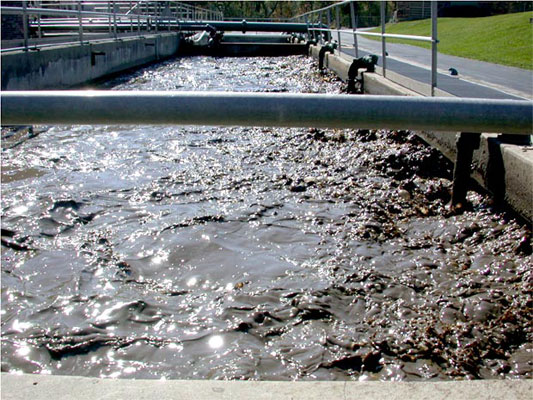- The lower F/M results in slower cell division which means less respiration by individual cells. At very low F/M we start to see cell lysis & death which means no respiration by the individual cell but later oxygen demand from "leaked" cell contents or endogenous respiration (this is what happens in an aerobic disgester).
- Extended aeration (low F/M) takes some or all the activities of an aerobic digester and moves them into the main biological treatment unit. This results in lower percentages of active degrading bacteria and more inert or dead cell mass.
- Suspending the greater solids concentration in the biological unit either requires mixers or more aeration (usually aeration).
- A side benefit of low F/M or high MLVSS is the ability of the mass to adsorb organics like a sponge - this gives more system stability in the case of toxic shocks or spill events.
- Another issue with high solids is the ability of the secondary clarifiers to maintain proper bed depth and avoid solids carryover.
- Very low F/M can cause biopolymers to degrade and the floc becomes pin floc - this will require synthetic polymer addition to clarify the water.
So what is the answer? Look at your system and biomass response to see the best MLVSS concentration for your waste stream. Increasing MLVSS to the far reaches of extended aeration reduces the oxygen consumption per individual bacterial cell but suspending the increased biomass and dealing with endogenous respiration oxygen demand cuts tends to consume the oxygen efficiency that was gained by moving to extended aeration.


 RSS Feed
RSS Feed